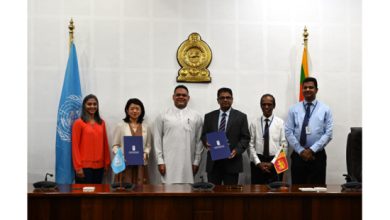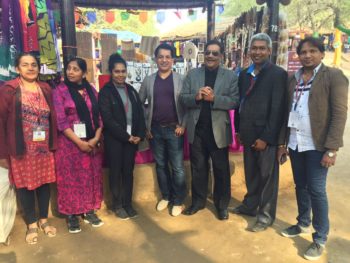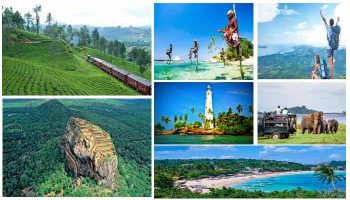Protection of Biodiversity and Sustainability of Sri Lanka Tourism


Professor in Tourism Economics
University of Colombo
Sri Lanka Tourism: The Triple-Hit Survivor
Easter Sunday Attacks, COVID-19 Pandemic and Severe Economic Crisis have made Sri Lanka Tourism as the most affected and vulnerable industry in Sri Lankan economy. Despite such impact, simultaneously the industry has been displaying its strengths on rapid recovery and resilience building with its great possible contribution for the economic growth and development of the country at present, more specifically for generating foreign exchange earnings.
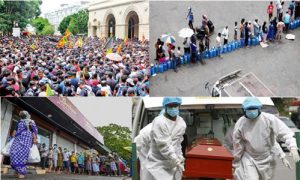
Despite the external shocks, the industry is considered as one of most resilient and rapid recovered industries as well. It has been proven through the phenomenal growth track of Sri Lanka Tourism during pre and post war time periods. From 2009 to 2018, tourist arrivals increased by nearly 475% while foreign exchange earnings of tourism increased by nearly 1150%. On the similarly, level of direct and indirect employment (total employment) increased by nearly 200% while formal accommodation capacity increased by approximately 70% (Silva Suranga, https://www.ceylondigest.com/people-centric-sustainable-tourism-development-and-entrepreneurial-new-public-service-in-sri-lanka/, 2020). Sri Lanka Tourism has become the 3rd Highest Foreign Exchange Earner of the country against the growing current deficit of the Trade Account in the Balance of Payment of the country.
Post-Aragala Sri Lanka Tourism: A Slow Recovery with Multiple Challenges
With the uncompromising strength of Sri Lanka Tourism, tourist arrivals of the country have surpassed over 600,000 by Nov 2022 despite the numerous challenges to be faced in both nationally and internationally. Russia, India the United Kingdom, Germany and Australia have become top source markets for generating tourists to Sri Lanka. Europe has become the largest source of tourist traffic to Sri Lanka along with nearly 60 % of the total traffic received in August 2022. From January to October, earnings from tourism amounted to a total of $ 1.02 billion reflecting a 546% increase from the corresponding period of last year impacted by COVID-19 (https://www.ft.lk/front-page/Tourist-arrivals-cross-600-000-mark/44-742192).
Sri Lanka recognized as a must visit destination in 2019 by Lonely Planet and some other global ranking has lost its heydays due to Easter Sunday attacks, COVID Pandemic, recent politico-economic crisis (including fuel, gas shortages, power-cuts), demand decline from international tourists, cost-push influenced on supply reduction, lack of proper promotion, bad media news, political uncertainty and many other reasons. ,
So-Sri Lanka: So Much in So Little
Tourist attractions in Sri Lanka by its size as an island provide the clear justification for recognizing the country as “So Much in So Little” and “A Land Like No Other” . The island destination has so unique archeological sites recognized UNESCO heritages, sandy beaches, unspoiled wildlife parks, natural sceneries and mesmeric socio-cultural diversity. This is why Sri Lanka has been identified undoubtedly as the finest island of its size in the world.
Protection of Biodiversity: Building A Shared Future for All Life
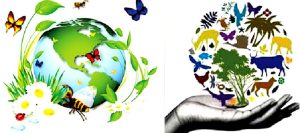
Biodiversity or “biological diversity” means the diversity of life on Earth at all scales, from genes to ecosystems.
It includes the ecological, evolutionary, and cultural processes that support the life on earth (https://www.amnh.org/research/center-for-biodiversity-conservation/what-is-biodiversity). Every living thing, such as human, animals and organisms such as bacteria, fungi, and invertebrates are included in biodiversity.
According to the International Union for Conservation of Nature (IUCN), biodiversity in the world is rapidly declining. It is severely damaged through human activities.
It is highlighted that:
- More than 150,300 species are on the IUCN Red List.
- Among these species, more than 42,100 species threatened with extinction
- This includes 41% of amphibians, 37% of sharks and rays, 36% of reef building corals, 34% of conifers, 27% of mammals and 13% of birds (https://www.iucnredlist.org/about/background-history).
Biodiversity is essential for everyone’s life. It creates wellness societies, resilient economies, successful businesses and happy livings. Biodiversity creates manifold opportunities for human development in different ways. The uses of biodiversity provide opportunities to obtain foods, fuels, shelters, medicine and other utilitarian contribution for human development.
Pragmatic and Intrinsic Valuations on Biodiversity:
Through pragmatic valuation, it has revealed that 50% of global GDP is dependent on nature. 75% of global food crops rely on animal pollination or fertilization.
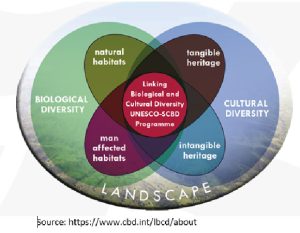
On the other hand, for ensuring the “Shared Future for All Life”, the worth of nature on its own, not what is worth to humans and their uses, has been considered by environmentalists through intrinsic valuation of biodiversity.
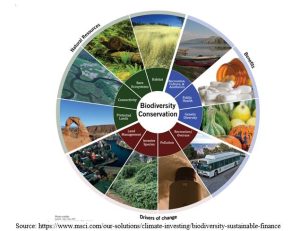
Bio-Culture: Ensuring for Long-Term Sustainability of Biodiversity
The “Bio-Culture” means the connection between the social behavior of humans and the biological elements. It considers the influence of human behavior on natural systems and biodiversity. Impact of responsible social behavior of humans on the uses of biodiversity determine the long-term sustainability of biodiversity and its great contribution to the wellbeing of humans themselves.
Interaction between biodiversity and bio-culture emphasizes that providing right awareness, focused education and necessary training on biodiversity protection along with the participation of all relevant stakeholders are to be considered as several effective strategies to improve the wellbeing of human through sustainable practices on biodiversity protection.
Sri Lanka Tourism and Biodiversity: Exclusive or Inclusive Each Other?
Sri Lanka has been identified as one of the best 34th biodiversity hotspots in the world and also as the highest biodiversity per unit area of land amongst Asian countries (https://www.ips.lk/talkingeconomics/).
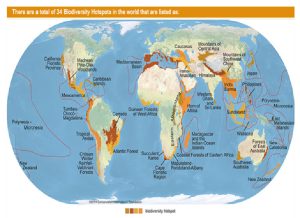
Source: https://www.themightyearth.com/biodiversity-hotspots/
Tourism and biodiversity are strongly connected to each other, more specifically when considering their possible impact and dependency on each other. Sri Lanka Tourism is largely driven through the great attraction of biodiversity. Ironically, tourism-related activities in Sri Lanka have provided some evidences for creating negative impacts on biodiversity protection in Sri Lanka.
Protection of biodiversity has been considered as one of the key cornerstones of sustainable tourism development. According to UNWTO, growth of tourism should benefit to the host nation’s and community’s social welfare, economic security and biodiversity preservation in equal proportion (https://www.unwto.org/sustainable-development/biodiversity). For achieving such benefits, it is decisive to enhance the understanding and awareness of the connection between tourism development and biodiversity.
Therefore, policy and decision makers of Sri Lanka Tourism should understand what tourism activities can be damaging the biodiversity and how such activities can be controlled with tourism development of the country. In addition, there should be a proper evaluation on how tourism industry is helpful to safeguard the biodiversity and also to strengthen biodiversity’s contribution to the wellbeing of people as a key resource for the tourist attraction of the country.
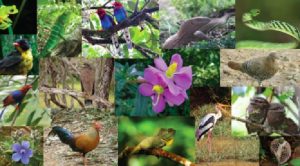
The successful responses to many challenges related to sustainable tourism development in Sri Lanka are mainly depended through the effectiveness of the strategies and policy measures for successfully addressing the protection of biodiversity to ensure sustainable tourism development in Sri Lanka.
In this context, raising the right awareness and knowledge to community members while making them empowered by proposing sustainable alternatives for their livelihoods and employment is also imperative and instrumental for sustainable tourism development in Sri Lanka.
Climate Change, Biodiversity and Sustainable Tourism Development in Sri Lanka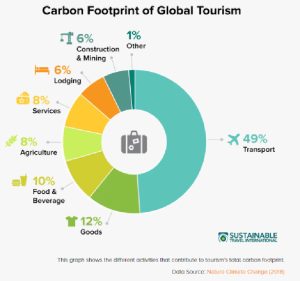
The climate-change crisis is now rapidly aggravating in the world making unexpected challenges for human life and development. One of the key sectors contributing this climate change is the tourism sector in global economy. Tourism is responsible for roughly 8% of the world’s carbon emissions.
According to UNWTO/ITF research released in December 2019 at UNFCCC COP25, CO2 emissions from tourism were forecast to increase at least by 25% by 2030 (https://www.oneplanetnetwork.org/programmes/sustainable-tourism/climatechange-tourism).
On the other, tourism is considered as one of the most vulnerable and highly climate-sensitive economic industries compared to some other industries. Such climate changes will significantly affect to Sri Lanka Tourism being a tropical island destination in the world, which might not be properly identified and recognized by the relevant policy and decision makers of the industry.
Climate change adaptation and mitigation strategies with suitable frameworks, tools and practices are paramount important for accelerating climate actions that should ensure the biodiversity protection and to enhance the resilience building in tourism industry (https://www.unep.org/resources/report/climate-change-adaptation-and-mitigation-tourism-sector-frameworks-tools-and).
Right-Policy Mix: Actions Speak Louder Than Words
Following key insights are highlighted as conclusions:
- Biodiversity must be recognized as one of the most valuable contributors for Sri Lanka Tourism development.
- Inspire and empower the individuals, organizations and all other relevant stakeholders to protect biodiversity through their sustainable behaviors in tourism business development.
- Through right awareness raising and capacity-building, empower the local communities, local governments and other related organizations to protect the biodiversity in tourism
- Sustainability standards are to be applied and practiced for tourism product and service development.
- Integrated and transparent mechanism must be implemented for monitoring, reporting and adaptive management of tourism impacts on biodiversity
- Market incentives and encouragements must be given for tourism businesses and investments that ensure the biodiversity protection through tourism development
- New technology adaptation must be carried out for spotlighting and accelerating mechanism to be implemented for biodiversity protection in tourism.
- Central authorities must develop a proper national plan and strategies to implement sustainable practices for biodiversity protection in tourism with results-based management approach.



